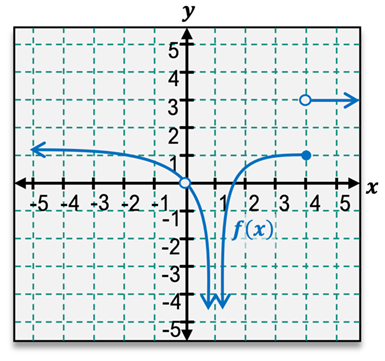Find the limit by creating a table of values.
Table of contents
- 0. Functions4h 53m
- 1. Limits and Continuity2h 2m
- 2. Intro to Derivatives1h 33m
- 3. Techniques of Differentiation2h 18m
- 4. Derivatives of Exponential & Logarithmic Functions1h 16m
- 5. Applications of Derivatives2h 19m
- 6. Graphical Applications of Derivatives6h 0m
- 7. Antiderivatives & Indefinite Integrals48m
- 8. Definite Integrals4h 36m
- 9. Graphical Applications of Integrals1h 43m
- 10. Integrals of Inverse, Exponential, & Logarithmic Functions21m
- 11. Techniques of Integration2h 7m
- 12. Trigonometric Functions6h 54m
- Angles29m
- Trigonometric Functions on Right Triangles1h 8m
- Solving Right Triangles23m
- Trigonometric Functions on the Unit Circle1h 19m
- Graphs of Sine & Cosine46m
- Graphs of Other Trigonometric Functions32m
- Trigonometric Identities52m
- Derivatives of Trig Functions42m
- Integrals of Basic Trig Functions28m
- Integrals of Other Trig Functions10m
- 13: Intro to Differential Equations2h 23m
- 14. Sequences & Series2h 8m
- 15. Power Series2h 19m
- 16. Probability & Calculus45m
1. Limits and Continuity
Introduction to Limits
Struggling with Business Calculus?
Join thousands of students who trust us to help them ace their exams!Watch the first videoMultiple Choice
Using the graph, find the specified limit or state that the limit does not exist (DNE).
limx→−2−f(x), limx→−2+f(x), limx→−2f(x)

A
limx→−2−f(x)=1, limx→−2+f(x)=1, limx→−2f(x)=1
B
limx→−2−f(x)=1, limx→−2+f(x)=−1, limx→−2f(x)=DNE
C
limx→−2−f(x)=1, limx→−2+f(x)=1 , limx→−2f(x)=DNE
D
limx→−2−f(x)=0, limx→−2+f(x)=0, limx→−2f(x)=0
 Verified step by step guidance
Verified step by step guidance1
Step 1: Observe the graph of f(x) near x = -2. The graph shows the behavior of the function as x approaches -2 from the left (x → -2⁻) and from the right (x → -2⁺).
Step 2: To find limx→−2⁻f(x), examine the values of f(x) as x approaches -2 from the left side. Follow the curve to see where it is heading as x gets closer to -2 from the left.
Step 3: To find limx→−2⁺f(x), examine the values of f(x) as x approaches -2 from the right side. Follow the curve to see where it is heading as x gets closer to -2 from the right.
Step 4: To determine limx→−2f(x), check if the left-hand limit (limx→−2⁻f(x)) and the right-hand limit (limx→−2⁺f(x)) are equal. If they are not equal, the limit does not exist (DNE).
Step 5: Based on the graph, note that limx→−2⁻f(x) = 1, limx→−2⁺f(x) = -1, and since the left-hand limit and right-hand limit are not equal, limx→−2f(x) = DNE.

 6:47m
6:47mWatch next
Master Finding Limits Numerically and Graphically with a bite sized video explanation from Patrick
Start learningRelated Videos
Related Practice
Multiple Choice
Introduction to Limits practice set


